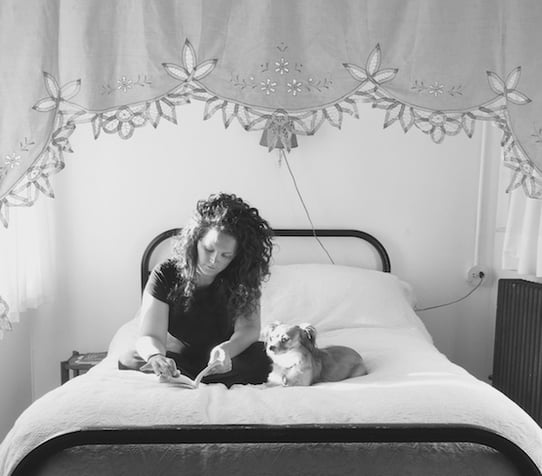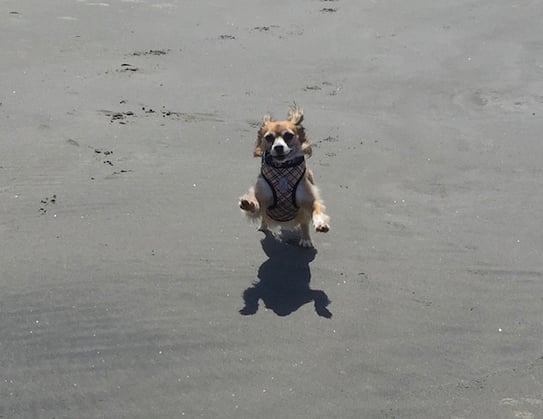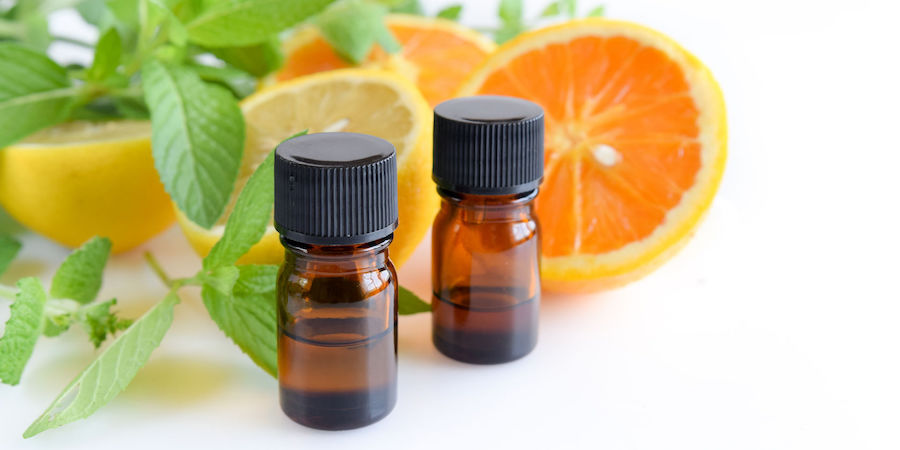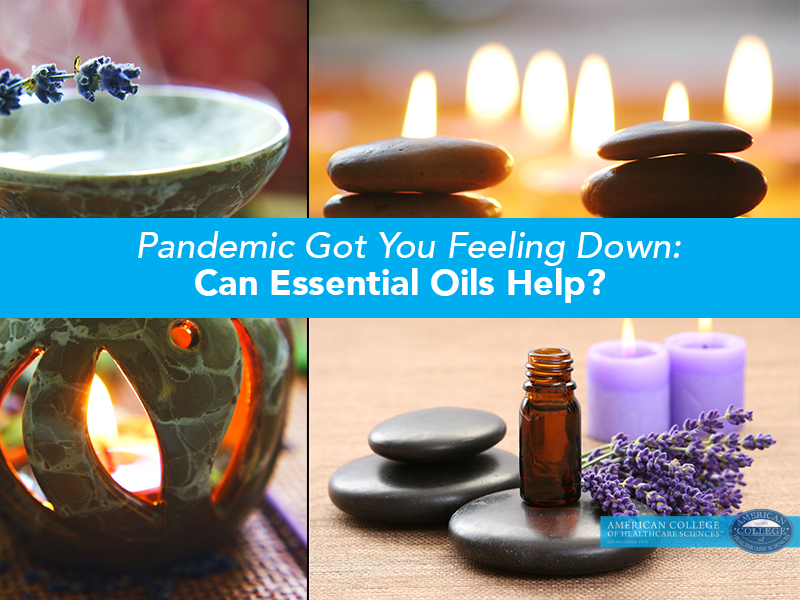When you think “holistic health” or “alternative medicine,” most likely your mind goes straight to images of herbal tinctures, essential oil blends, Tibetan bowls for Reiki, or flower essences. The image of a fluffy Chihuahua mix or labradoodle is the last thing prancing into your head.
But as someone who has seen measurable mental and physical health benefits after adopting an Emotional Support Animal (ESA), I’m here to tell you: complementary alternative medicine (CAM) is more than herbs, oils, and acupuncture.
How CAM Saves My Life
Along with an estimated 40 million American adults,[1] I’ve struggled with moderate anxiety and depression since early adolescence.
After researching the side effects of common pharmaceuticals prescribed for anxiety and depression (fatigue, insomnia, weight gain, gastric issues, etc.[2]), I decided that prescription meds were not for me.[3]

Photo by Renee Long – Instagram @hayreneenay
A holistic approach to my mood is the only other option. I do my best to carve out a self-care routine and take steps to eliminate mood “triggers.”
Here’s what that looks like:
- I use essential oils in diffuser blends, the bath, and morning/evening sprays. Oils that work great for me are clary sage Salvia sclarea(L.), geranium Pelargonium graveolens (L'Her.), rose Rosa damascena (Mill.), bergamot Citrus aurantium (L.) var. bergamia, and lavender Lavandula angustifolia (Mill.).
- I drink herbal tea blends in the evenings before bed, specifically with herbs like lavender angustifolia, chamomile Matricaria recutita(L.), and California poppy Eschscholzia californica (Cham.).
- I run and practice yoga.
- I keep to a minimal caffeine intake (no coffee or soda).
- I monitor and reduce foods that trigger mood dips, nervous feelings, or lethargy. For me, this is often sugar (fructose) and heavily processed grain (white bread and pasta).
While a self-care routine is crucial for maintaining a healthy mood, anyone who struggles in these areas knows that managing depression and anxiety often feels like showing up for a Nascar race with no racecar. And barefoot.
You have no gasoline, no battery, no wheels to push you forward, and the thought of racing on your own bare, tired feet is overwhelming. Meanwhile, everyone else on the track of life is lapping you. Self-care is often the last thing on a depressed or anxious person’s mind, and the routine can be extremely hard to maintain.
Enter Nala the Chihuahua mix!
Meet Nala: My Furry Little Life-Saver
Sure, I was aware of studies showing the therapeutic benefits of animal therapy (I’ve referenced a few below). But I did not realize the extent to which caring for an animal would enhance my mental health.
Before I adopted Nala—a 12 pound, Chihuahua-Tibetan Spaniel mix—I was worried that my mood would make me an irresponsible dog owner. How could I care for another living thing if it was such a struggle to manage my own self-care?

Photo by Renee Long – Instagram @hayreneenay
Turns out, the opposite was true. Once I adopted Nala, the responsibility of keeping her on a routine made it that much easier for me to maintain my own healthy habits.
Here are a few ways Nala has enhanced my wellness routine:
- She wakes me up. Early! When 12 pounds of happiness pounces on you and licks your face in the morning, it’s easier to eat a healthy breakfast, go for a run, pack a nutritious lunch, and get mentally prepared for the day.
- She keeps me calm. Studies show that interacting with a pet lowers blood pressure.[4] A cuddle with Nala is incredibly useful during an anxiety attack or on a plane when my heart and mind are prone to racing.
- She’s a natural mood booster. Most animal people don’t need a study to tell them that animals make us happy. But lucky for us, it’s documented! Research shows that interacting with an animal can lower levels of stress-related parameters such as epinephrine and norepinephrine.[5] Nala is my furry, "natural SSRI."
- She keeps me active. Nala is one more reason to get outside—to the park, the beach, the lake, or simply around my block. Research shows that exercise and sunlight can ease symptoms of depression and anxiety,[6] and a dog is one more kick-in-the-butt to get movin’.
- She forces me to be social. As an introvert, I’m not the type of person who goes out of her way to get to know the neighbors. Nala, on the other hand, is your Hi!-want to be friends-let me lick you-let’s play-this is fun-let’s run-let me lick you-let’s be friends! type of canine. Since she entered my life, I’ve met almost every person on my block simply by walking down the street two to three times a day. And guess what: they’re GREAT folks! Having good, kind people around you is essential to managing anxiety and depression, and every time I take my dog for a walk, it’s a literal step in the right direction.
Photo by Renee Long – Instagram @hayreneenay
CAM is More Than Herbs and Oils
Clearly, for me, adopting a dog was the right decision for my mental and physical health. She is one piece of my self-care puzzle that keeps me grounded and focused.
Of course, every individual is different. Some folks find that music therapy, color therapy, journaling, yoga, meditation, horseback riding, or reading (or all of the above!) is essential to managing a healthy mood. That is the beauty of CAM—our lifestyles and routines can be the medicine we desperately need.
This has reminded me that the path to wellness must truly be a “holistic” one—focusing on the whole person, their routine, their joy, and their individual needs. Whether that’s cuddling up with a puppy, slipping into a bath with mood-boosting oils, or SCUBA diving a shipwreck, the path to wellness can be one grand, individualized adventure.
What makes your holistic health routine unique?
This article is for informational purposes only. It is not intended to treat, diagnose, cure, or prevent disease. This article has not been reviewed by the FDA. Always consult with your primary care physician or naturopathic doctor before making any significant changes to your health and wellness routine.
Disclosure of Material Connection: I am a Communications Specialist for American College of Healthcare Sciences, the Institution that publishes this blog. However, all opinions are my own. This blog may contain affiliate links. I am disclosing this in accordance with the Federal Trade Commission’s 16 CFR, Part 255: “Guides Concerning the Use of Endorsements and Testimonials in Advertising.”
[1] ADAA (2014) Understand the facts of anxiety and depression is the first step. Retrieved from http://www.adaa.org/understanding-anxiety (Accessed: 21 July 2016).
[2] Mayo Clinic (2013) ‘Depression (major depressive disorder) Antidepressants: Get tips to cope with side effects’, Mayo Clinic. Retrieved from http://www.mayoclinic.org/diseases-conditions/depression/in-depth/antidepressants/art-20049305 (Accessed: 19 July 2016)
[3] Note: I have nothing against pharmaceutical medications when they are necessary—this is a highly personal choice for very complex issues. Every person is different, and should be working with a trusted counselor and holistic health practitioner to determine their care needs.
[4] Morrison, M.L. (2007) ‘Health benefits of animal-assisted interventions’, Complementary Health Practice Review, 12(1), pp. 51–62. doi: 10.1177/1533210107302397.
[5] Beetz, A., Uvnäs-Moberg, K., Julius, H., & Kotrschal, K. (2012). Psychosocial
and psychophysiological effects of human-animal interactions: the possible
role of oxytocin. Frontiers in psychology, 3. doi: 10.3389/fpsyg.2012.00234
[6] Mayo Clinic (2014) ‘Depression and anxiety: Exercise eases symptoms’, Mayo Clinic. Retrieved from http://www.mayoclinic.org/diseases-conditions/depression/in-depth/depression-and-exercise/art-20046495 (Accessed: 19 July 2016)
Editor's Note: This blog post was originally published in August 2016 and has been updated for accuracy. (March 2018)







